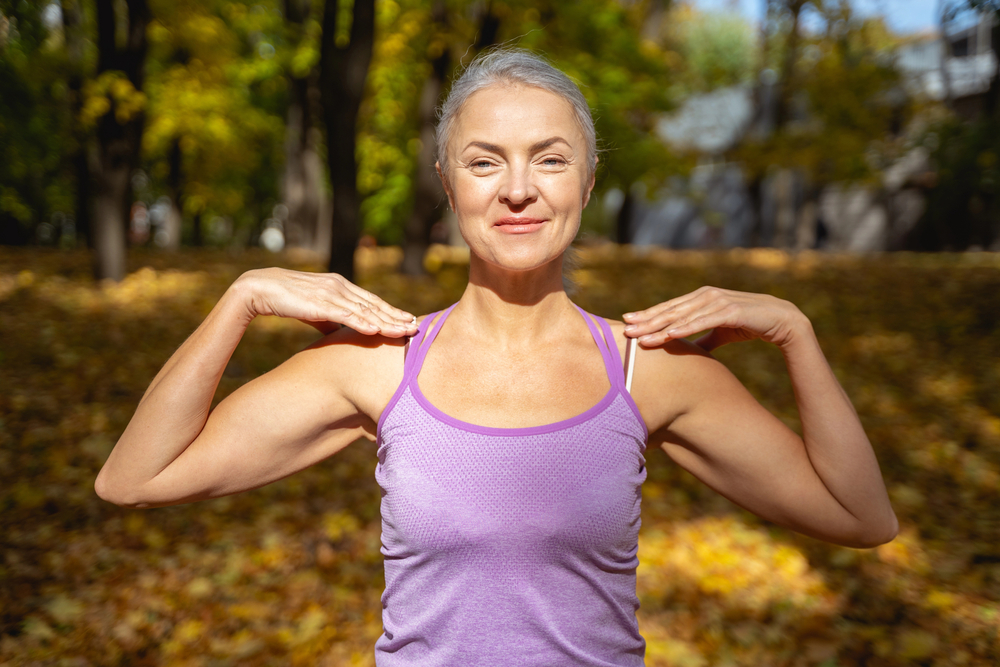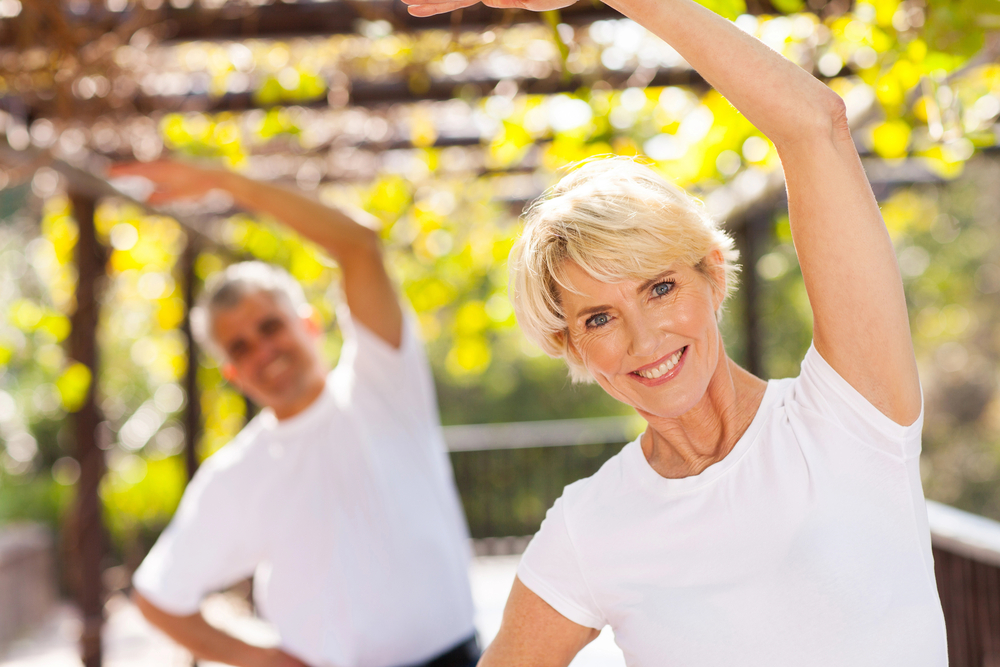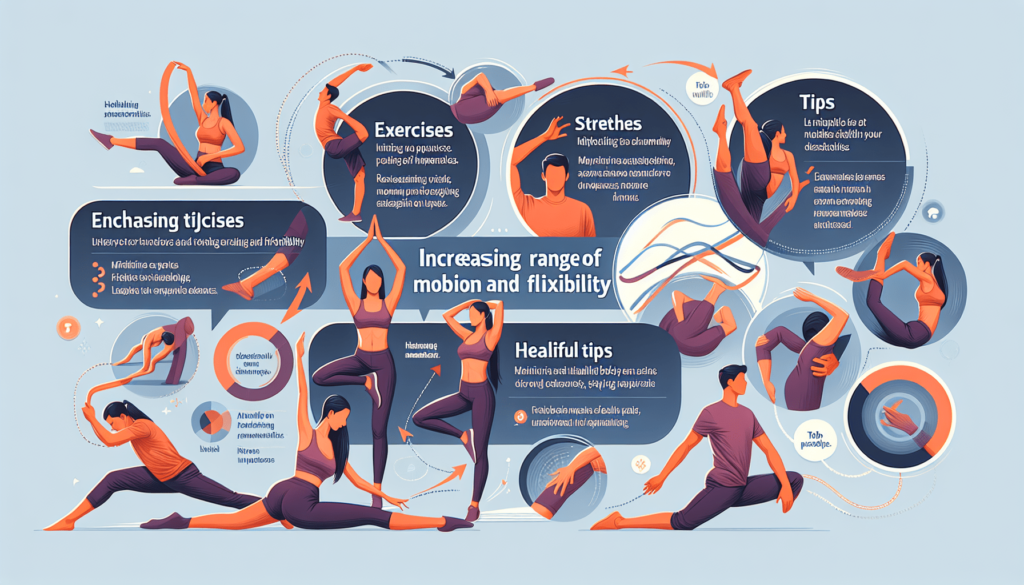In “The Ultimate Guide to Increasing Range of Motion,” you will explore the significance and advantages of enhancing flexibility and expanding your range of motion. This comprehensive guide will equip you with valuable insights on how to become more flexible, improve your mobility, maintain independence, and enjoy the level of activity you desire, regardless of your age. By incorporating effective techniques and exercises into your routine, you can unlock the potential of your body, enabling you to move with greater ease and grace. Say goodbye to limitations and embrace a lifestyle of fluidity and freedom. Are you ready to unlock your full range of motion? Let’s get started!

Understanding Range of Motion
Defining range of motion
Range of motion refers to the extent and direction in which a joint or series of joints can move. It is determined by the flexibility of our muscles, tendons, ligaments, and other soft tissues surrounding the joint. Range of motion can vary from person to person and is essential for performing daily activities and engaging in physical exercise.
Importance of range of motion
Having a good range of motion is crucial for maintaining overall health and well-being. It allows you to move freely and perform various tasks, such as bending, reaching, and lifting, without pain or restriction. Range of motion is also closely linked to flexibility and mobility, both of which are key factors in maintaining independence and leading an active lifestyle.
Benefits of increased range of motion
Improving your range of motion offers numerous benefits for both your physical and mental well-being. It can reduce the risk of muscle strains and injuries by allowing your joints to move more freely. Increased range of motion can also enhance athletic performance and improve your posture and body alignment. Additionally, it can help relieve muscle tension and promote relaxation, thus reducing stress and enhancing your overall quality of life.
Assessing Range of Motion
Range of motion tests
Various tests can be done to assess your range of motion. These tests involve measuring the angles and degrees of movement in specific joints. Common range of motion tests include the goniometry test, which is used to measure joint angles, and the functional movement screen, which evaluates overall movement patterns and identifies any limitations or imbalances.
Measuring range of motion
Range of motion can be measured using various tools, such as a goniometer or inclinometer. These devices help determine the degrees of movement in different joints accurately. It is essential to measure range of motion regularly to track any improvements or identify areas that need attention. Consulting with a healthcare professional or a certified trainer can help ensure accurate measurements and provide insights on how to improve your range of motion.
Factors Affecting Range of Motion
Age
As we age, our range of motion tends to gradually decrease. This is due to natural changes in our muscles, tendons, and joints, such as a decrease in muscle flexibility and joint lubrication. However, maintaining an active lifestyle and engaging in regular range of motion exercises can help counteract the effects of aging and preserve flexibility and mobility.
Physical fitness
Your level of physical fitness plays a significant role in your range of motion. Regular exercise and strength training can help enhance flexibility and improve joint mobility. Engaging in activities that target flexibility, such as yoga or Pilates, can be particularly beneficial for increasing range of motion.
Muscle imbalances
Muscle imbalances occur when certain muscles are stronger or tighter than their opposing muscles. This can lead to restricted range of motion and increased risk of injuries. Addressing muscle imbalances through targeted stretching and strengthening exercises can help restore balance and improve range of motion.
Injuries and surgeries
Injuries and surgeries can significantly impact range of motion. Scar tissue and muscle tightness can develop during the healing process, restricting movement. Physical therapy and rehabilitation exercises are often prescribed to restore range of motion after an injury or surgery. Seeking professional guidance is recommended to ensure safe and effective recovery.
Medical conditions
Certain medical conditions, such as arthritis or joint disorders, can affect range of motion. These conditions can cause inflammation, pain, and stiffness in the joints, resulting in limited movement. It is crucial to work closely with a healthcare professional to manage these conditions and develop a range of motion plan tailored to your needs.
Warming Up for Increased Range of Motion
Dynamic stretching
Dynamic stretching involves performing controlled movements that mimic the exercises or activities you are about to engage in. This type of stretching helps increase blood flow to the muscles, improve joint mobility, and warm up the body in preparation for physical activity. Examples of dynamic stretches include arm circles, leg swings, and walking lunges.
Joint mobilization exercises
Joint mobilization exercises are specific movements and techniques aimed at improving the range of motion in a joint. These exercises often involve gently applying pressure, traction, or oscillation to the joint, helping to reduce stiffness and increase flexibility. Joint mobilization exercises can be performed with the assistance of a qualified professional, such as a physical therapist or chiropractor.
Cardiovascular warm-up
Including a cardiovascular warm-up routine before stretching exercises can further enhance range of motion. Engaging in activities such as brisk walking, jogging, or cycling for 5-10 minutes helps increase body temperature, blood flow, and oxygen delivery to the muscles. This prepares your body for stretching and promotes optimal flexibility.

Stretching Techniques
Static stretching
Static stretching involves holding a stretch for a prolonged period, typically around 30 seconds. This type of stretching targets specific muscles or muscle groups and aims to gradually increase flexibility. Static stretches can be done both before and after physical activity to improve range of motion and prevent muscle imbalances.
PNF stretching
Proprioceptive Neuromuscular Facilitation (PNF) stretching is a technique that involves contracting and relaxing specific muscles to improve flexibility. It is often done with a partner to provide resistance and assistance during the stretch. PNF stretching is highly effective for increasing range of motion and is commonly used in rehabilitation settings.
Active stretching
Active stretching involves using your own muscles to stretch specific areas of your body. This type of stretching requires you to hold a position using your strength without assistance from external forces. Active stretching is beneficial for improving muscle flexibility, joint stability, and overall range of motion.
Dynamic stretching
Dynamic stretching, as mentioned earlier, involves performing controlled movements that take your joints and muscles through a full range of motion. This type of stretching helps increase muscle temperature, blood flow, and joint lubrication, thus enhancing flexibility and preparing the body for more intense physical activity. Dynamic stretches are ideal before activities such as running or weightlifting.
Strengthening Exercises for Range of Motion
Resistance training
Resistance training, also known as weightlifting or strength training, can significantly improve range of motion. By strengthening the muscles surrounding a joint, resistance training helps improve joint stability and flexibility. It is important to perform exercises that target all major muscle groups to achieve balanced strength and promote optimal range of motion.
Pilates
Pilates is a low-impact exercise method that focuses on core strength, flexibility, and body awareness. Many Pilates movements involve elongating the muscles while engaging deep core muscles for stability. This combination of stretching and strengthening contributes to increased range of motion and improved posture.
Yoga
Yoga combines physical postures, breath control, and meditation to promote physical and mental well-being. The various poses and movements in yoga help increase flexibility, improve joint mobility, and enhance overall range of motion. Regular practice of yoga can lead to significant improvements in flexibility and range of motion.
Isometric exercises
Isometric exercises involve contracting the muscles without changing the length of the muscle or joint angle. These exercises can be helpful in developing strength in specific positions and muscle groups. Isometric exercises are particularly beneficial for enhancing stability and range of motion in certain joints.

Maintaining Range of Motion
Regular stretching and strengthening routines
To maintain and continue improving your range of motion, it is essential to establish regular stretching and strengthening routines. Make stretching a part of your daily or weekly routine, focusing on all major muscle groups. Incorporate strengthening exercises that target specific muscle imbalances or areas of weakness to prevent imbalances that can restrict range of motion.
Postural awareness and correction
Maintaining proper posture throughout the day is essential for preserving range of motion. Poor posture can lead to muscle imbalances, joint compression, and limited mobility. Practicing postural awareness and making necessary corrections can help improve and maintain a healthy range of motion. Engage in exercises that target postural muscles, such as rowing or shoulder stabilization exercises.
Foam rolling and self-myofascial release
Foam rolling and self-myofascial release techniques can help release muscle tension and improve range of motion. Using a foam roller or other tools, you can apply pressure to specific muscles, promoting relaxation and improving muscle flexibility. Foam rolling can be incorporated into your pre- or post-workout routine to enhance mobility and reduce muscle soreness.
Addressing Specific Body Parts
Neck and shoulders
Range of motion exercises for the neck and shoulders can help alleviate tension and improve flexibility. Gentle neck rolls, shoulder stretches, and shoulder rotations can target these areas and promote increased range of motion. It is important to perform these exercises slowly and without force, allowing the muscles and joints to gradually adapt and improve.
Spine and back
Improving range of motion in the spine and back is crucial for maintaining a healthy posture and preventing back pain. Exercises such as cat-cow, spinal twists, and gentle backbends can help enhance mobility and flexibility in the spine. Strengthening exercises targeting the core muscles in the abdomen and lower back can also contribute to improved range of motion in the spine.
Hips and pelvis
The hip joints and pelvis play a significant role in overall range of motion, as they are involved in various movements, such as walking, running, and sitting. Hip stretches, hip rotations, and exercises that target the glutes and hip flexors can improve range of motion in the hips and pelvis. Strengthening exercises, such as squats and lunges, can also help enhance stability and flexibility in these areas.
Knees and ankles
The knees and ankles are essential for proper lower body movement and balance. Range of motion exercises for these joints, such as knee extensions, ankle rotations, and calf stretches, can help improve flexibility and reduce the risk of injuries. Incorporating exercises that target the surrounding muscles, such as leg presses and heel raises, can further enhance range of motion and stability in the knees and ankles.

Modifying Daily Activities for Range of Motion
Ergonomics
Maintaining good posture and using proper ergonomics in everyday activities can greatly impact your range of motion. Whether sitting at a desk, lifting objects, or performing household tasks, it is important to be mindful of your body mechanics. Using supportive chairs, adjusting workstations to the correct height, and practicing correct lifting techniques can help prevent stiffness and promote optimal range of motion.
Balancing sedentary behavior with physical activity
Excessive sedentary behavior can lead to muscle tightness and decreased range of motion. It is crucial to balance extended periods of sitting with regular physical activity. Taking breaks every hour to stretch and move around can help prevent stiffness and maintain flexibility. Incorporating physical activities, such as walking, swimming, or cycling, into your daily routine promotes overall range of motion.
Incorporating movement breaks and stretches
Integrating movement breaks and stretches into your daily routine can significantly improve range of motion. Set aside specific times throughout the day to stand up, stretch, and move around. Perform simple stretches targeting key muscle groups or practice gentle exercises, such as yoga or Tai Chi, to keep your body mobile and maintain flexibility.
Seeking Professional Help
Physical therapy
If you have specific range of motion issues or are recovering from an injury or surgery, seeking the guidance of a physical therapist can be beneficial. Physical therapists are trained to assess range of motion, identify areas of limitation, and develop personalized treatment plans. They can guide you through appropriate exercises, manual therapies, and other techniques to improve and maintain your range of motion.
Chiropractic care
Chiropractors specialize in diagnosing and treating musculoskeletal disorders, including those affecting range of motion. Through manual adjustments, spinal manipulations, and other therapies, chiropractors can help restore proper joint function, alleviate pain, and improve range of motion. Consult with a qualified chiropractor to assess your specific needs and create a treatment plan.
Massage therapy
Massage therapy can be a valuable addition to your range of motion routine. Massage therapists are skilled in using various techniques to relax muscles, increase circulation, and improve flexibility. By targeting specific areas of tension or tightness, massage therapy can help enhance range of motion and relieve discomfort. Make sure to communicate your range of motion goals to your massage therapist for a tailored treatment approach.
Remember, increasing your range of motion is a gradual process that requires consistency and patience. It is important to listen to your body, respect its limitations, and seek guidance from qualified professionals when needed. By implementing the tips and techniques mentioned in this article, you can work towards improving your range of motion and enjoy the many benefits that come with it. Stay committed, stay active, and embrace a healthier, more flexible you!




